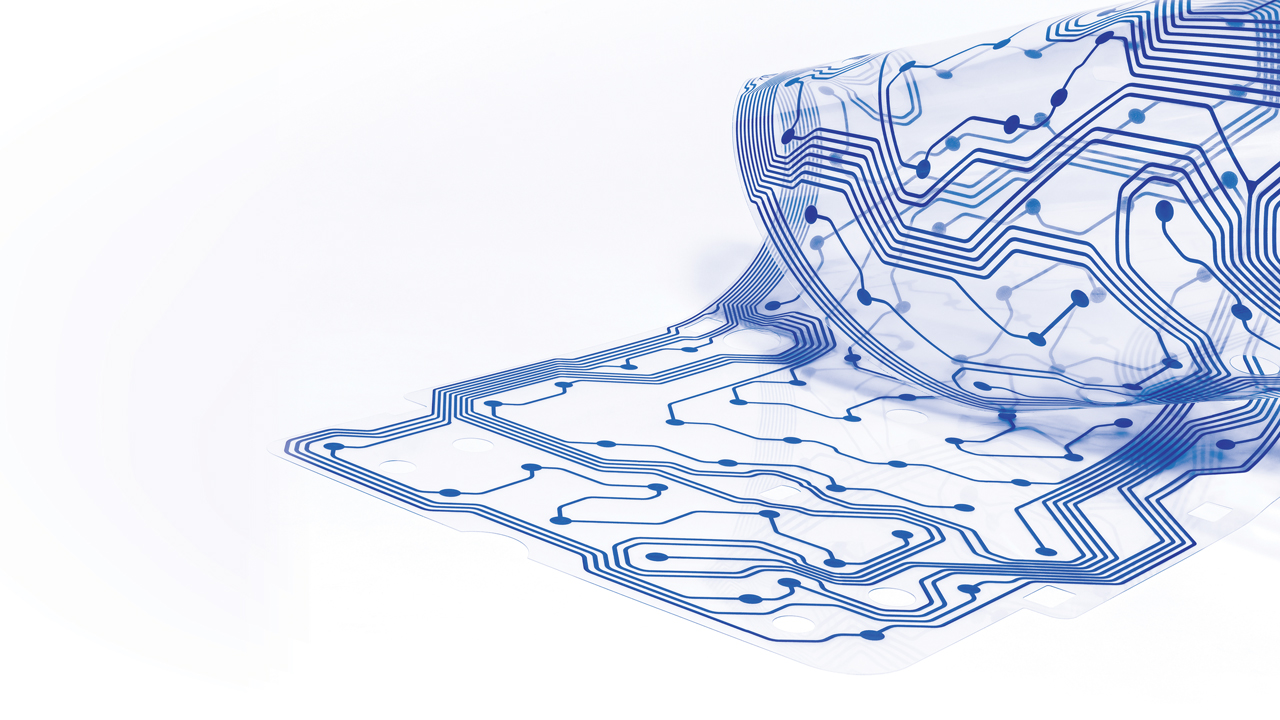Flexing Research Muscle in Electronics
Mechanical engineering professor Pradeep Lall uses additive manufacturing techniques to blaze trails in the field of flexible hybrid electronics.
By Virginia Speirs

Flexible hybrid electronics (FHE) is one of the most rapidly emerging fields of electronic research in the engineering discipline.
By using a breadth of flexible materials, researchers are discovering new ways of making pliable electrical components, such as batteries and circuits.
The functionality and practicality of additive manufacturing allows FHE technology to accomplish this goal. Pradeep Lall, the John and Anne McFarlane Endowed Distinguished Professor of mechanical engineering and director of the National Science Foundation Center for Advanced Vehicle and Extreme Environment Electronics, is a trailblazer of FHE research, especially with additive manufacturing. Lall has been studying flexible hybrid electronics for more than 20 years and has specialized in FHE research since he began his career at Auburn University in 2002.
One of the reasons Lall came to Auburn for this research was his interest in design of electronics for operation in extreme conditions and harsh environments, which is a major research thrust at Auburn.
“The unique thing we have here at Auburn is we have a very strong background in extreme environment electronics,” Lall said. “It is a wonderful compliment to be able to bring additive manufacturing into the harsh environment community. The bulk of the work has been largely focused on subtractive manufacturing in the past, so the fact that we can print things additively brings a higher level of control, now that we can support systems for very long periods of time.”
With additive manufacturing, Lall and his team are able to be more creative with the materials they can print, which paves the way for a more flexible product, he said. There are three different platforms for additive creation of circuits that Lall is able to work with – Aerosol-Jet printing, InkJet printing and direct-write and screen-print based methods. These forms of printing allow for a wide range of materials to be used for FHE circuit printing, Lall said.
A very applicable use for FHE technology is its ability to wrap around a curved surface, such as a wrist. One recent project of Lall’s has piqued the interest of companies and organizations such as NASA. The project is an FHE bracelet that has the ability to sense the health conditions of a person in an extremely harsh environment. The bracelet is able to detect potential health risks, such as abnormal pulse, anxiety levels and overall health by monitoring physiological functions, such as cortisol levels, he said.
“We have two programs going on with NASA currently, both are very exciting,” Lall said. “They are both related to what is called an astro-sense platform. One of the programs we are attempting to develop is an additively printed human body sensor that can monitor the state of stress in the human body. One of the common indicators of stress is cortisol, which is in the sweat itself, and we’re developing sensors to be able to monitor and correlate the cortisol to a stress or anxiety level that a person may be undergoing.
“A second aspect of the program is to develop additively printed sensors of various types to better understand the states where the temperatures are very low,” Lall continued. “For example, on a planet where there is a great degree of temperature difference on the lighter side from the shady side, there can be a difference of a hundred degrees or more. To be able to explore extreme environments from an unmanned vehicle using additively printed sensors is a technology that has never been available before.”
Another recent advancement of Lall’s is the ability to additively print multi-layer antennas, he said. The antennas are designed for data transmission, and can be mounted on the side of airborne, unmanned vehicles and can be conformally mounted on the body of the vehicle itself. This is another technological advancement that has a particular interest from NextFlex National Manufacturing Institute. Lall has worked on a number of flexible-hybrid electronics sponsored contracts encompassing flexible batteries, multi-layer z-axis interconnects, reliability test protocols, flexible encapsulation. Lall serves as the technical-lead for Auburn University’s participation as a Tier-1 founding academic member of NextFlex. In this role, Lall serves on the Technical Council of the Institute and as academic co-lead of the asset monitoring TWG.
Lall is using FHE technology to break the stereotype that rigidity equals strength, he said. Lall wants to prove, with flexible technology, that electronics do not have to be inflexible to be strong. The NextFlex manufacturing institute bridges the chasm that normally exists between fundamental research and technology realization in high-volume manufacturing, explained Lall.
“The challenge of flexible electronics is that you need robustness and ruggedness, but you don’t want it at the cost of flexibility,” Lall said. “Flexible electronics proves we can have technology that is flexible and robust at the same time. Generally, we like to associate stronger things with more rigid ones.”
Lall is a fellow of NextFlex, America’s Flexible Hybrid Electronics Manufacturing Institute, and they have sponsored him in a number of programs in FHE research. Lall has received over $2 million in financial support from various federal agencies and commercial companies in CY2020 in a number of projects related to FHE manufacturing, design and reliability. Auburn’s capabilities have only continued to grow since he started studying harsh environment electronics at Auburn nearly two decades ago, according to Lall.
“Auburn has progressed so much from where we were 20 years ago in terms of the things that we can do,” Lall said. “The resources and the center we have here has grown tremendously and, therefore, our capabilities have grown tremendously.”

